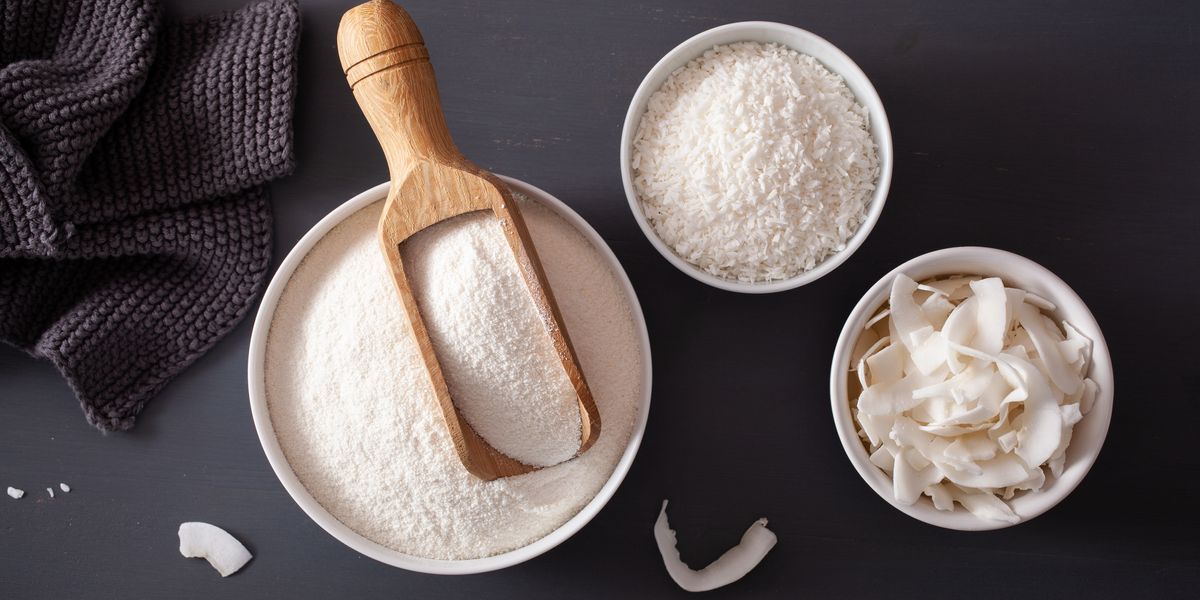Baking a Little More These Days? Amp Up the Nutrients With These Alternative Flours
There’s been a lot of fear-mongering surrounding gluten in recent years. “All over the internet, you read: ‘It’s toxic. It causes inflammation. It’s bad, bad, bad,’ ” says Marie Scioscia, dietitian and author of Eat Right Dance Right. “That is not really the case.”
But along with the rise of our misplaced fear over gluten have come a number of trendy flour options from gluten-free sources. And although dancers without medical conditions like celiac disease or gluten intolerance don’t need to avoid wheat, they might still have something to gain from alternative plant-powered powders. Kristin Koskinen, a dietitian who specializes in sports and dance medicine, points out that the more varied our food sources are, the better.
Supercharge your recipes to hit more nutritional boxes with these dietitian-approved flour swaps.
Cauliflower
Not to be confused with grated cauliflower “rice,” which retains some of the vegetable’s moisture, cauliflower flour is fully dried and powdered, and it’s a vitamin powerhouse.
Nutrients:
- vitamin C, which is anti-inflammatory and useful for joint health
- B vitamins like B6, folate and pantothenic acid that could help you recuperate from both physical and mental stress
- cancer-fighting antioxidants
- gut-healthy and blood-sugar–regulating fiber
- choline, a foundational nutrient for the body’s nervous system
Pro tip: The vegetable flavor sticks around when cooked, so this flour might be best for savory recipes, like pizza crust.
Almond
The blitzed nuts have very high protein content, making this ideal for the vegetarian or vegan dancer looking to pack in more of the macronutrient.
Nutrients:
- protein
- magnesium, which is needed for bone mineralization and healthy blood vessel functioning, and can help with cramped muscles, says Scioscia
Pro tip: Almond flour is one of Koskinen’s favorites. It’s easy to find (you can make it yourself in a high-speed blender or food processor using blanched, peeled almonds) and can be swapped one-to-one in baking recipes.
Chickpea
“There’s nothing bad about a chickpea!” says Scioscia. Chickpea flour also goes by the name garbanzo bean flour.
Nutrients:
- protein
- iron
- fiber and some healthy fats, a combination that keeps you satiated
Pro tip: Look internationally for some cooking tips. Socca and farinata are the respective French and Italian words for a chickpea-based flatbread that makes for a tasty appetizer, snack or side.
Sorghum
This “ancient grain” has been eaten for millennia. Its neutral taste and light texture make it a favorite for baking.
Nutrients:
- B vitamins
- iron
- magnesium
- zinc, which is important for healing, says Scioscia
Pro tip: Many people know sorghum from its sweet syrup form. However, the syrup doesn’t contain the same concentration of nutrients that the ground grain does.
Buckwheat
Not actually a wheat, buckwheat falls into the pseudocereal category, meaning it’s a seed from a non-grass plant. (Amaranth and quinoa are also pseudocereals.)
Nutrients:
- magnesium
- protein
- fiber
- quercetin, a phytonutrient which is found in other plant foods, like grapes and apples, says Koskinen. A relatively new find in the nutrition-science world, phytonutrients are likely to have anti-inflammatory, heart-disease–preventing and even allergy-fighting properties.
Pro tip: Buckwheat’s distinctive, nutty flavor makes it a unique boost for your morning pancake stack.
Coconut
Unlike the other flours listed, coconut flour is not a good one-for-one wheat substitute. “Coconut flour absorbs liquid like crazy,” says Koskinen.
Nutrients:
- iron
- fiber
- lauric acid, a protein that has been shown to fight infections, Scioscia says
Pro tip: Coconut flour is best combined with other flours or balanced with far more liquid or eggs per recipe to mitigate the drying factor.
Oat
Oat flour may be the clear front-runner when judged on flavor neutrality, ease of use, availability and nutrient density. Scioscia notes that oats are excellent for dancers because of their anti-inflammatory properties.
Nutrients:
- iron
- magnesium
- antioxidants
- high soluble-fiber content, which helps lower cholesterol and improve blood-sugar response, giving you more energy through a long morning
Pro tip: Similar to almonds, oat flour is a beginner’s favorite. Koskinen recommends powdering your own rolled oats in a blender and starting with something easy like muffins, a great grab-and-go snack for the dance bag.





